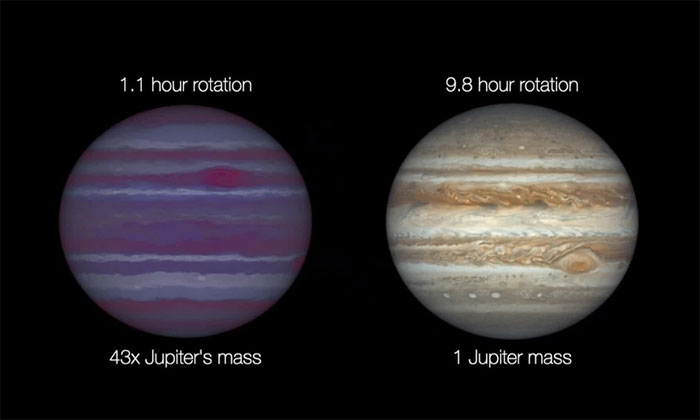The new brown dwarfs identified by NASA have rotational speeds so fast that they can reach the edge of the universe.
Brown dwarfs are also known as “failed” stars because they are heavier than most planets but not large enough to produce the same fusion reactions in the nucleus as a real star. Using data from the Spitzer Space Telescope, NASA astronomers said they identified three other such substellar objects and, in particular, revolve around the axis at a faster rate than any star.

Objects named 2MASS J0348−6022, 2MASS J1219-3128, and 2MASS J0407-1546 are about the same size as Jupiter, but 40 to 70 times heavier than that. They are located 29.66 light years from Earth and 119 light years away, in the constellations of Vong Co, Hau Phat and Taurus.
The team led by NASA astronomer Megan Tannock measured the changes in light of brown dwarfs caused by the Doppler effect and used a computer model to calculate their rotational speed. The results show that the three celestial bodies rotate on their own axis at speeds of up to 360,000 km / h (100 km / s) and complete each rotation in just one hour.
In comparison, it’s 10 times faster than Jupiter and 30% faster than the fastest brown dwarf on record. It is approaching the speed limit which, if exceeded, the celestial body will shatter due to the radial force, the team stressed.
“It would be spectacular if a brown dwarf spins so fast that it throws its atmosphere into space, but so far we haven’t found anything like it,” says Tannock.
Despite the same size and rotational speed, the three brown dwarfs in the study differ significantly in temperature, including one hot, one cold, and one in the middle.
Details of the research were published in the Astronomical Journal. In the next phase, Tannock and his colleagues wanted to make more observations as to whether these fast-spinning brown dwarfs had a natural “brake” mechanism.


